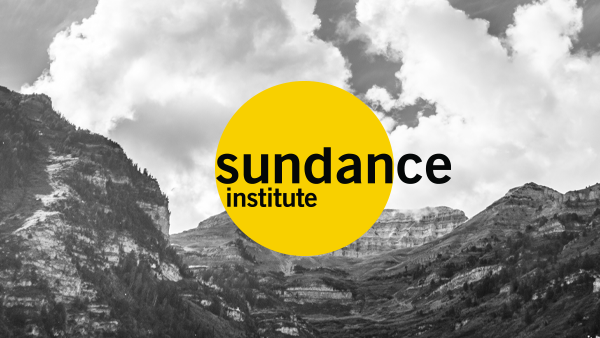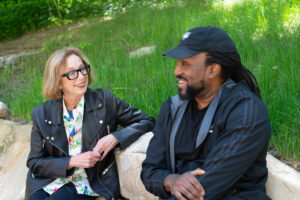Philip Himberg
Theatre in Salt Lake City has always surprised and delighted me. More than two thousand miles away from the hustle and bustle of New York, yet daring and risk-taking theatre is produced in Utah year after year, and there is an audience enthusiastic to support it.
This season, three plays that were originally nurtured at the Sundance Institute Theatre Lab find life in Salt Lake City. In some ways, these plays reflect the range of genre that Sundance Institute has celebrated supporting since the Theatre Program began its development work in the early 1980s.
Angels in America, by Tony Kushner, enjoyed many development and production relationships as it made its way to a Tony Award and Pulitzer Prize in the early 1990s. One of those stops was the Sundance Playwrights Lab (before I began my tenure at the Institute).
Circle Mirror Transformation, by Annie Baker, was a project in our 2008 Theatre Lab, a quirky and deeply engaging play that takes place in an amateur acting class in a small Vermont town. It was a breakaway hit at Playwrights Horizons in New York and is popping up all over the regional theatre landscape this season.
 Duncan Sheik at the Theatre Lab. Photo by Jennifer Hathorne.In 1999, a script arrived at Sundance as one of 500 plus submissions that was as unlikely a “hit” as I could have imagined—Steven Sater’s reinterpretation of the early–20th-century play Spring Awakening, by Swiss writer Franz Wedekind.
Duncan Sheik at the Theatre Lab. Photo by Jennifer Hathorne.In 1999, a script arrived at Sundance as one of 500 plus submissions that was as unlikely a “hit” as I could have imagined—Steven Sater’s reinterpretation of the early–20th-century play Spring Awakening, by Swiss writer Franz Wedekind.
It was melded to a contemporary rock score by pop/rock composer Duncan Sheik. I cannot imagine that most Broadway type producers would have paid much mind to this edgy, unique, and totally original conception at this stage of its life. But Sundance did.
I was interested, in part, because director Michael Mayer was attached to this play, and I had great faith in Michael’s vision and talent. I was intrigued as to whether this nearly 100-year-old play, so groundbreaking when it was first produced (and censored), could find a voice with a new generation of theatre-goers.
A story of emerging sexuality in an utterly repressed society at once seemed “old,” and yet potentially very powerful and utterly contemporary. As with most selections at Sundance Institute, we felt it was a risk worth taking; we couldn’t have imagined the journey that lay ahead.
I do recall that at that 2000 July lab in the mountains of Utah, we were suddenly surrounded by very young actors. Because the script called for teenagers, barely awakening to their own adult selves, the acting company that year was a full generation younger than what we normally hosted.
Some of them were fully in their twenties but looked ten years younger. They brought a great deal of energy, fun, and dynamic to that season of plays, a season that also included the first-ever workshop of I Am My Own Wife by Doug Wright (another very unlikely hit that went on to win a Tony and Pulitzer a few years later).
Duncan’s music and Sater’s book melded beautifully. While there were challenges with bringing the whole piece to life-characters cut and rearranged, new songs added, and other songs replaced-what emerged after three weeks at the Lab, was a stunning and potentially exciting new form for American musical theatre. Unexpected. Moving. Real.
I was not wrong that it took producing theatres a while to appreciate the gem that Spring Awakening was. Unlike other Sundance Institute–supported work that often took only two years to find production (90% of our work does find production), Spring Awakening took a full six years to come to fruition. There were other workshops, concerts of the music, and finally a bid from the venerable Atlantic Theatre Company to produce it entirely off-Broadway. That gorgeous production moved to Broadway, where multiple Tonys awaited.
Best of all was the phenomenon of young people coming to see it and of parents and grandparents coming with their families. Yes, it had resonance. Yes, it moved people, of all ages.




